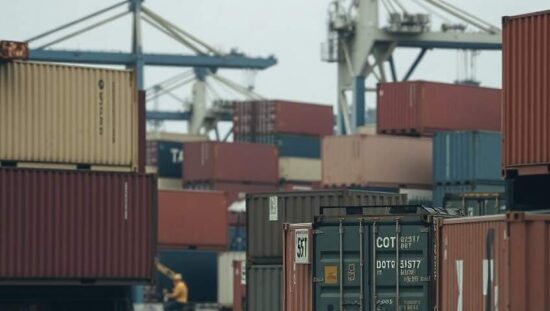Germany’s export figures have demonstrated a slight recovery in September, according to preliminary data released Friday by the Federal Statistical Office. While representing a modest upturn, the figures also reveal a concerning shift in trade patterns and potential vulnerabilities in the German economy. Export volumes rose by 1.4% and imports by 3.1% when calendar and seasonal adjustments were applied, compared to August. Year-on-year, exports increased by 2.0% and imports by 4.8%.
The surplus in Germany’s trade balance narrowed from €18.0 billion in September 2024 to €15.3 billion last month, a trend analysts attribute to rising import costs and structural changes within the global economy. The nominal, unadjusted figures, however, paint a more optimistic picture, showing a 5.3% increase in exports and a substantial 7.5% climb in imports compared to September 2024.
Trade with European Union member states continues to dominate, with €74.3 billion in exports and €59.3 billion in imports. Exports to non-EU countries (third states) remained unchanged from August, while imports from these nations saw a significant 5.2% surge, highlighting a growing dependence on goods from outside the EU.
The United States remains Germany’s most important export destination, with €12.2 billion in goods shipped – a welcome increase following five consecutive months of decline, though still 14.0% lower than in September 2024. This suggests a possible rebound in demand, but also a fragility susceptible to shifts in US economic policy.
Conversely, exports to the People’s Republic of China fell by 2.2% compared to August, to €6.7 billion, signaling ongoing challenges in navigating the complex geopolitical landscape and potential impacts from trade tensions. Exports to the United Kingdom, however, saw a sharp increase of 7.1%, potentially reflecting a strategic realignment following Brexit.
Notably, China is also Germany’s largest import partner, with imports valued at €14.6 billion, marking a 6.1% increase from the previous month. This underscores the continued reliance on Chinese-manufactured goods, a point of concern for policymakers keen on bolstering domestic production and diversifying supply chains. Imports from the US and the UK also experienced significant increases, suggesting a potential inflationary pressure and an ongoing shift away from previously established trade dependencies.
Exports to Russia increased slightly (0.8% from August) to €0.6 billion, a figure that, while small, invites scrutiny given ongoing sanctions and the broader political ramifications of continued trade. Imports from Russia, however, decreased, suggesting a partial decoupling from the Russian economy, though the degree of impact remains limited.
The modest recovery in German exports offers a temporary reprieve, but the underlying trends paint a conflicting picture. The reliance on specific markets, particularly China and the increasing volume of imports raise questions about the long-term health and resilience of the German export model. The narrowing trade surplus demands careful monitoring and proactive policy interventions to safeguard Germany’s economic competitiveness in an increasingly volatile global environment.





